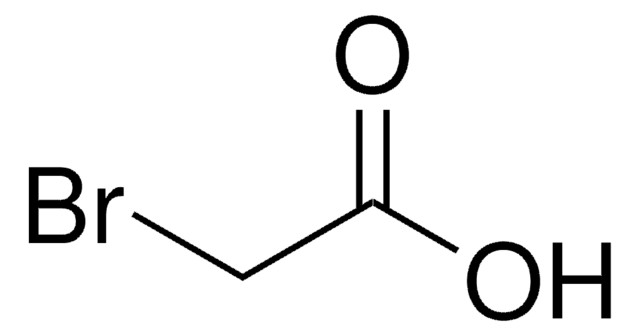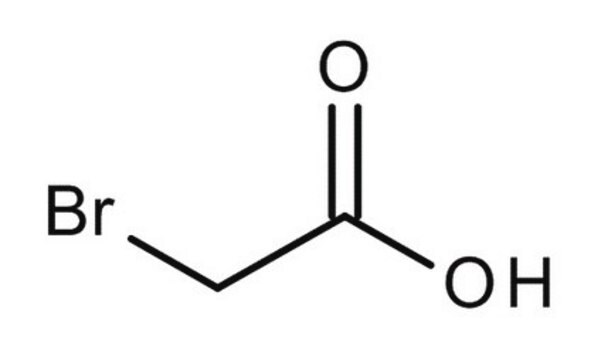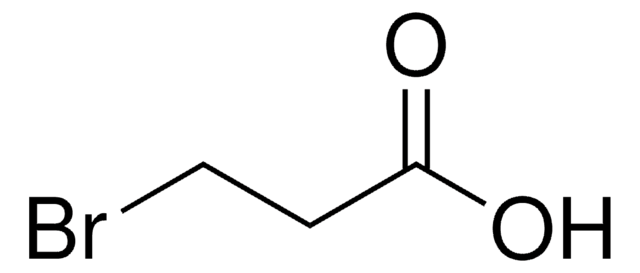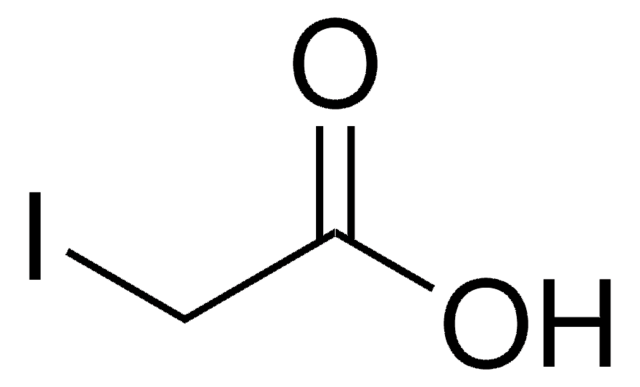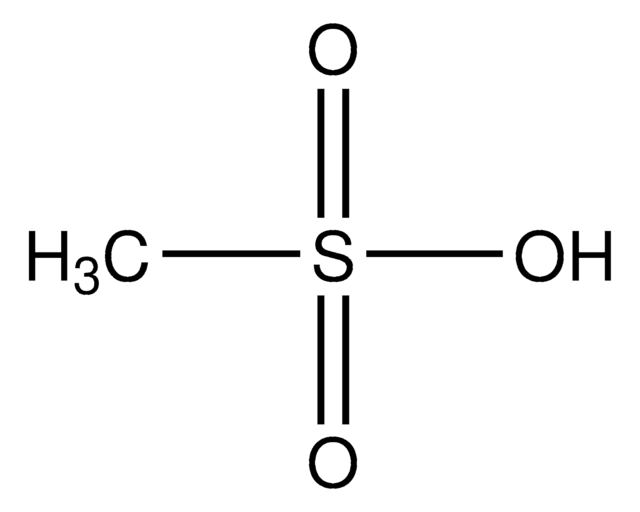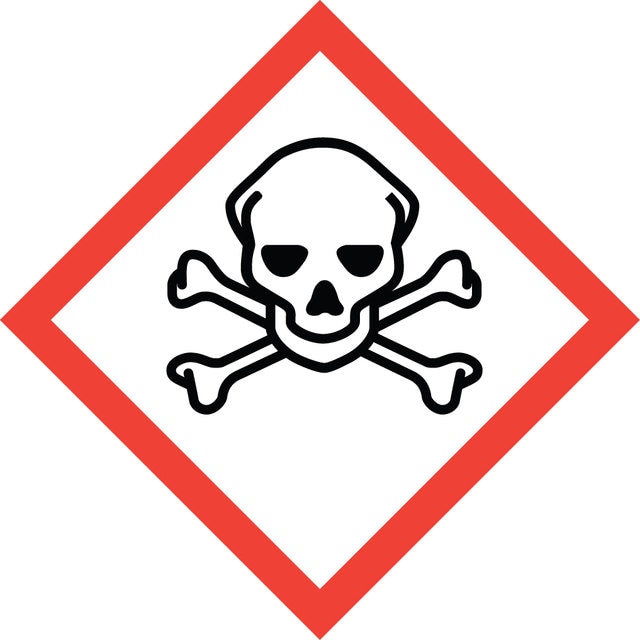추천 제품
Quality Level
제품 라인
ReagentPlus®
분석
≥99.0% (GC)
≥99.0%
양식
solid
불순물
≤1% dibromoacetic acid (1H-NMR)
bp
208 °C (lit.)
mp
46-49 °C
47-49 °C (lit.)
solubility
chloroform: 10%, clear, colorless
작용기
bromo
carboxylic acid
SMILES string
NC(=O)C=C
OC(=O)CBr
InChI
1S/C2H3BrO2/c3-1-2(4)5/h1H2,(H,4,5)
InChI key
KDPAWGWELVVRCH-UHFFFAOYSA-N
유사한 제품을 찾으십니까? 방문 제품 비교 안내
관련 카테고리
애플리케이션
Bromoacetic acid is mainly used for the N-terminal bromoacylation of resin bound peptides.
It can also be used:
It can also be used:
- To synthesize (Z)-2-(cyclooct-4-en-1-yloxy)acetic acid.
- To synthesize α-bromo-phenylacetamide.
- To convert aromatic thiosemicarbazones to thiazolylhydrazones.
법적 정보
ReagentPlus is a registered trademark of Merck KGaA, Darmstadt, Germany
신호어
Danger
유해 및 위험 성명서
Hazard Classifications
Acute Tox. 2 Oral - Acute Tox. 3 Dermal - Acute Tox. 3 Inhalation - Aquatic Acute 1 - Eye Dam. 1 - Skin Corr. 1A - Skin Sens. 1
Storage Class Code
6.1A - Combustible acute toxic Cat. 1 and 2 / very toxic hazardous materials
WGK
WGK 3
Flash Point (°F)
235.4 °F - closed cup
Flash Point (°C)
113 °C - closed cup
개인 보호 장비
Eyeshields, Faceshields, Gloves, type P3 (EN 143) respirator cartridges
이미 열람한 고객
Marta Radaelli et al.
Molecules (Basel, Switzerland), 24(17) (2019-09-06)
Dissolved organic matter (DOM) plays an important role in the environment by influencing the transport and distribution of organic and inorganic components through different processes: the retention, mobilization, and bio-availability of potentially toxic elements (PTEs). The aim of the present
Shanshan Lv et al.
Langmuir : the ACS journal of surfaces and colloids, 35(22), 7255-7260 (2019-05-16)
Clay nanosheets (CNSs) have been widely used in the design of nanocomposite biomaterials. CNSs display a disk-like morphology with strong negatively charged surfaces. It has been shown that guanidinium-containing molecules can bind CNSs through noncovalent salt-bridge interactions and thus serve
Efficient method for the preparation of peptoids [oligo (N-substituted glycines)] by submonomer solid-phase synthesis.
Zuckermann R N, et al.
Journal of the American Chemical Society, 114(26), 10646-10647 (1992)
Ryo Kato et al.
Spectrochimica acta. Part A, Molecular and biomolecular spectroscopy, 228, 117656-117656 (2019-11-22)
To sense hydrophilic anions in protic solvents, we fabricated polymethylmethacrylate (PMMA) nanofibers incorporating 4-nitrophenyl azo thiourea polymer as a chromoionophore. When methanol solutions containing anions contacted the PMMA nanofiber, a bathochromic shift from 386 nm was observed in the absorption maximum
Discovery of 3, 5-bis (trifluoromethyl) benzyl L-arylglycinamide based potent CCR2 antagonists.
Yang L, et al.
Bioorganic & Medicinal Chemistry, 16(14), 3735-3739 (2006)
자사의 과학자팀은 생명 과학, 재료 과학, 화학 합성, 크로마토그래피, 분석 및 기타 많은 영역을 포함한 모든 과학 분야에 경험이 있습니다..
고객지원팀으로 연락바랍니다.